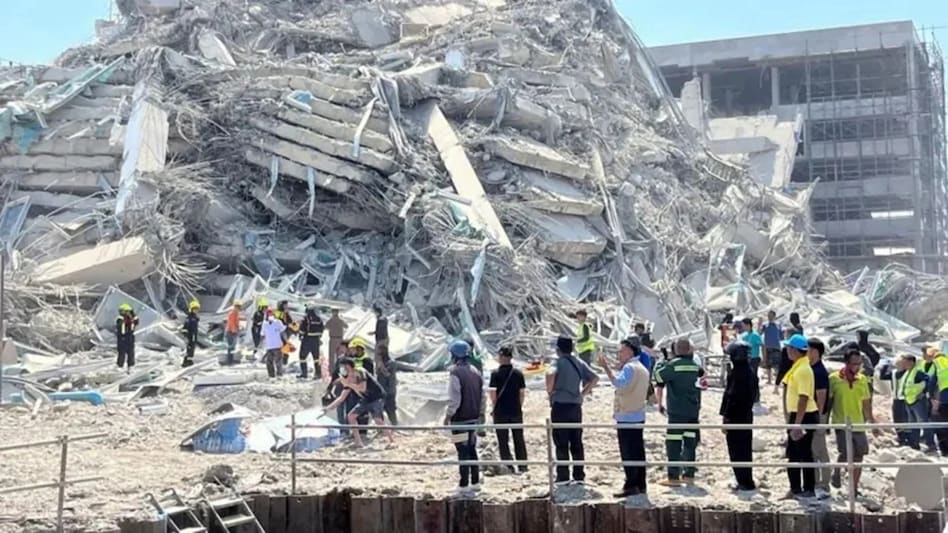 Myanmar earthquake: 7.7 magnitude tremor strikes, death toll rising
Myanmar earthquake: 7.7 magnitude tremor strikes, death toll rising Myanmar earthquake: 7.7 magnitude tremor strikes, death toll rising
Myanmar earthquake: 7.7 magnitude tremor strikes, death toll risingThe massive 7.7-magnitude earthquake that struck Myanmar on Friday unleashed a force equivalent to hundreds of nuclear bombs, according to geologists, as the death toll continues to rise and tremors ripple across the region.
“The force that a quake like this releases is about 334 atomic bombs,” geologist Jess Phoenix told CNN. She warned that the worst may not be over, with aftershocks likely to continue for months as the Indian tectonic plate keeps colliding with the Eurasian plate under Myanmar.
The earthquake struck just northwest of Sagaing city near Mandalay at a shallow depth of 10 kilometres. The United States Geological Survey (USGS) said it occurred on the right-lateral Sagaing Fault—one of the major fault lines in the region—with a rupture zone stretching 200 km by 20 km.
“This is the most powerful earthquake to hit Myanmar since 1912,” USGS noted. The quake, followed 12 minutes later by a 6.4-magnitude aftershock, has left at least 1,600 dead, with local authorities fearing the final toll could be significantly higher. The USGS has estimated fatalities may exceed 10,000 based on earlier projections.
Seismologist James Jackson from the University of Cambridge described the rupture as a violent slice through the earth. “The earthquake was caused by a rupture that lasted for a full minute,” he said. “Think of a piece of paper tearing, and it tears at about two kilometers per second.”
Another expert, Shengji Wei from the Earth Observatory of Singapore, said the event was devastating but “not an unexpected event,” given the fault’s historical activity. The region has seen at least six magnitude 7 or larger quakes within 250 km of this one since 1900.
The impact has been widespread. Buildings collapsed in Mandalay and Sagaing, roads buckled in the capital Nay Pyi Taw, and tremors were felt as far as Bangkok and southwest China. In Thailand’s capital, an unfinished high-rise crumbled, killing six workers and leaving around 50 missing.
Phoenix warned that the country’s ongoing civil war and communication blackout are obstructing the world’s ability to grasp the full extent of the disaster. “Myanmar's catastrophe will only worsen,” she cautioned, pointing to the challenges of conducting rescue and relief operations under conflict conditions.
As the dust settles, scientists say the danger isn’t over. The stress along the fault line, the history of large quakes in the region, and the ongoing tectonic collision suggest the region could remain seismically active for some time to come.